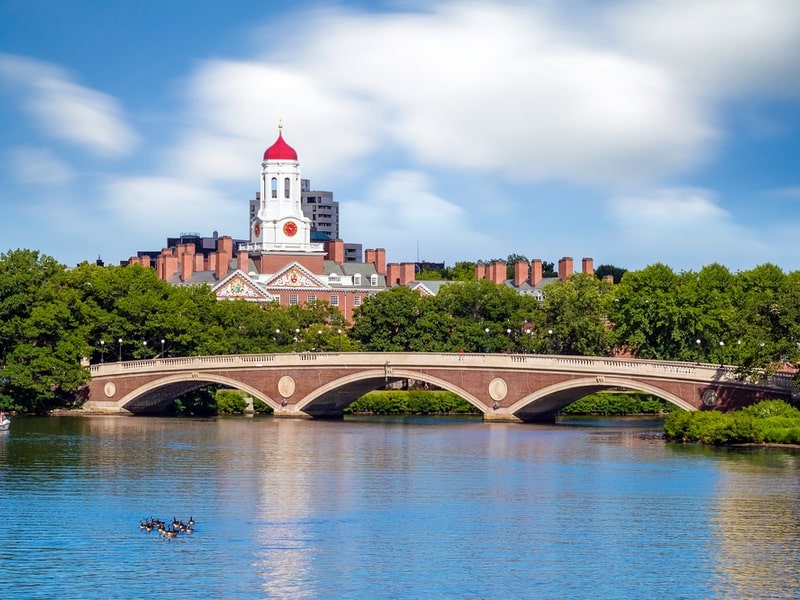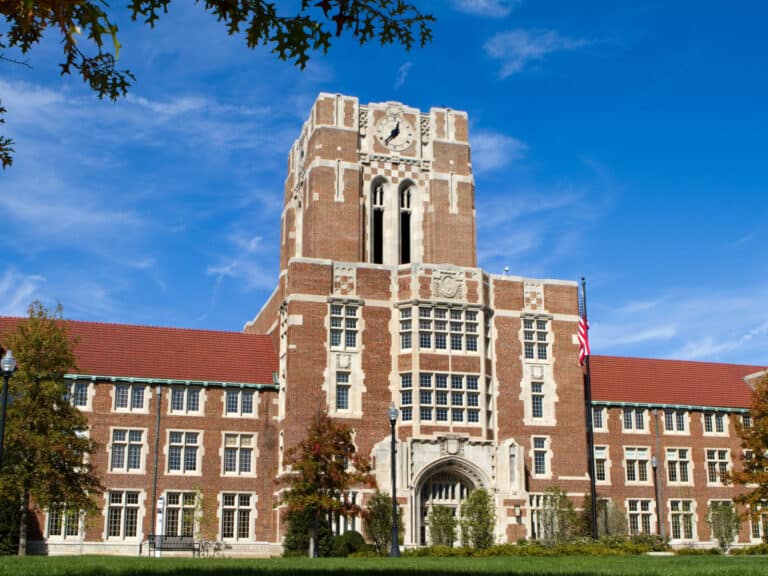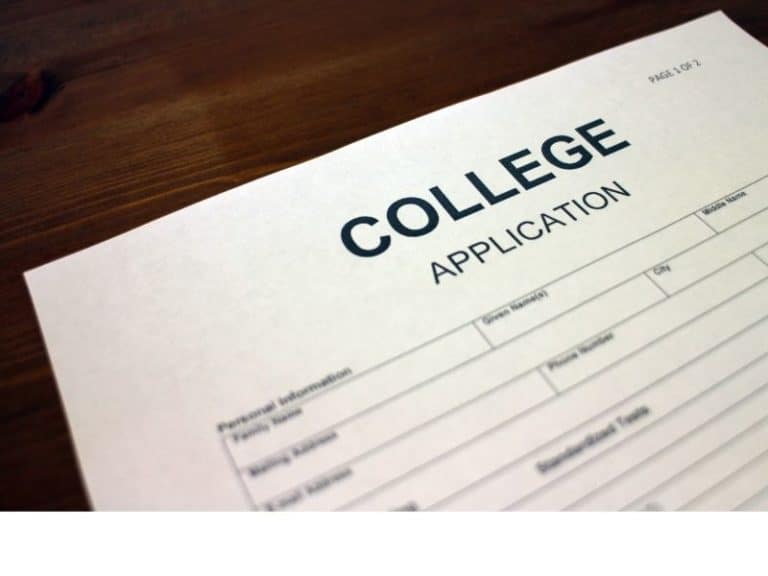What Makes College Good a Good Fit
Choosing a good college is crucial for the best possible higher education experience and career after graduation. Luckily, spotting a good institution is not that difficult, especially if you know which factors to consider.
Affordable tuition and generous financial aid are two things that make a college good budget-wise. High retention and graduation rates usually suggest that students are happy with their college experience. A good college also ensures that many faculty members are available and the students are safe.
Trying to build a college list composed of nothing but some of the best schools in the land?
Now is not the time to stop reading. Below, we will discuss a few things to take into account when deciding whether or not a college or university should be shortlisted. After checking out the entirety of this article, you will realize that the college selection process should not leave a student (and the parents, too) with a bad headache.
But before anything else, let’s answer this pressing question…

Should You Quit Looking at College Rankings?
College rankings can help facilitate the shortlisting process, especially when colleges are ranked according to factors students deem important. However, college lists should not be created based on college rankings alone. Students should consider factors other than those used by college rankers.
It’s during the college application season when college ranking sites become very busy.
Because many college-bound teens find the task of shortlisting institutions to apply to daunting and confusing, it isn’t surprising why traffic to college ranking sites increases exponentially.
Keep in mind that different college ranking sites use different factors in deciding which schools should reign supreme. As a result of this, the ensuing lists are subjective — an institution is #1 because the college ranker only takes into consideration data points it believes is important, excluding those that it personally finds irrelevant.
For instance, how often do college-seeking students come across college rankings based on categories such as Best in Schedule Flexibility, Best in Academic Advising or Best in Availability of On-Campus Tutors?
Refrain from assuming that all college ranking sites are cut from the same cloth. While there are reliable ones, there are also shady college rankers that are only after making money. These questionable sites pocket money from institutions they have ranked high each time they are able to encourage unsuspecting students to enroll in them.
It’s exactly due to this why it’s a must that you choose which college ranking sites you trust.
The good news is that you don’t have to go to great lengths just to find out which college rankers are doing a great job. Some of the most trusted sites are those that you often hear or read about, such as:
- US News & World Report
- Forbes
- Niche
- The Princeton Review
- Washington Monthly
- QS World University Rankings
Bottom line…
There is no need for you to quit checking out college ranking sites. However, do not let college rankers make the decision for you. When coming up with a college list, always rank entries based on factors that you reckon are vital for the attainment of the best possible college experience and, ultimately, the best possible degree.
Related Article: 14 US News Rankings Alternatives
Six Things That Make a Good College
Now that we have answered that important question many are too embarrassed to ask, it’s now time to plunge into the meat of this article: the things that make a college or university good.
Affordable Cost of Attendance
One of the reasons why some students are hesitant to go to college is the steep cost. On average, the cost of tuition tends to increase by up to 8% every year.
Because of this, the cost of attendance is a staple factor in the college selection process.
The good news is that there are steps you may take to keep the pursuit of higher education from leaving your family’s savings in shambles. One of the smartest things you can do is go to a public college or university. Almost always, the sticker prices of public institutions are lower than those of private ones.
Refrain from thinking that earning a degree will be easy on the pocket just because you are about to apply to a public school. Keep in mind that schools owned and funded by the government have in-state tuition and out-of-state tuition. Since in-state tuition is so much lower than out-of-state tuition, going to a public institution in your state is a wise move.
But if it’s a private college or university that you want to attend, fret not. Check out this list of some of the most affordable private schools in the US and the net price of attending them:
| NAME | LOCATION | NET PRICE |
| Berea College | Berea, Kentucky | $4,938 |
| Brigham Young University – Idaho | Rexburg, Idaho | $6,871 |
| Heritage University | Toppenish, Washington | $7,356 |
| College of the Ozarks | Point Lookout, Missouri | $7,505 |
| LeMoyne-Owen College | Memphis, Tennessee | $7,721 |
| Rust College | Holly Springs, Mississippi | $8,644 |
| Western Governors University | Salt Lake City, Utah | $8,786 |
| Peirce College | Philadelphia, Pennsylvania | $8,993 |
| Grantham University | Lenexa, Kansas | $9,303 |
| North American University | Stafford, Texas | $9,886 |
| Humphreys University | Stockton, California | $10,240 |
| University of the West | Rosemead, California | $10,834 |
| Columbia Southern University | Orange Beach, Alabama | $11,241 |
| Magdalen College of the Liberal Arts | Warner, New Hampshire | $11,245 |
| Aspen University | Denver, Colorado | $11,779 |
| Baker College | Owosso, Michigan | $12,112 |
| Wesleyan College | Macon, Georgia | $12,117 |
| Benedict College | Columbia, South Carolina | $12,155 |
| Monroe College | New York City, New York | $12,330 |
| Oakland City University | Oakland City, Indiana | $12,481 |
But don’t choose an institution just because it’s the most affordable that you can find. To get the best value, consider an affordable college or university with good academics and programs.
Strong Financial Aid
The cost of attendance and financial aid come hand in hand — if the tuition and fees and other college-related expenses are considered, it’s almost always for certain that college-bound kids will also take financial aid into account.
Financial aid can be sponsored by the government, private organizations and the institutions for higher education themselves. No matter the case, one thing remains true: it can help bring the cost of earning a college degree down to a reasonable level, especially for students from low-income backgrounds.
Many different types of financial aid are in existence, and they include:
- Grants
- Scholarships
- Work-study jobs
- Student loans
- Military family aid
- International study aid
If the sticker price is what’s keeping you from pursuing higher education, financial aid should be one of the most important factors to consider when creating your college list.
Besides checking out how many students get financial aid and how much each of them wins, it’s also a must that you check a school’s eligibility requirements for financial aid. As a general rule of thumb, the more it seems like you need monetary assistance, the more competitive the financial aid you are likely to get.
Here are some US colleges and universities that are known to offer the most financial aid for low-income students, where at least 10% of the student body has a household income of less than $30,000 per year:
| NAME | LOCATION | NET PRICE |
| University of California – Los Angeles | Los Angeles, California | $15,718 |
| Stanford University | Stanford, California | $16,779 |
| Georgia Institute of Technology | Atlanta, Georgia | $16,883 |
| University of Michigan – Ann Arbor | Ann Arbor, Michigan | $17,357 |
| University of Virginia | Charlottesville, Virginia | $17,579 |
| Harvard University | Cambridge, Massachusetts | $18,030 |
| Yale University | New Haven, Connecticut | $18,073 |
| Pomona College | Claremont, California | $18,500 |
| Princeton University | Princeton, New Jersey | $18,712 |
| Rice University | Houston, Texas | $20,335 |
| Massachusetts Institute of Technology | Cambridge, Massachusetts | $20,465 |
| Columbia University | New York City, New York | $21,828 |
| Middlebury College | Middlebury, Vermont | $23,367 |
| Bowdoin College | Brunswick, Maine | $23,808 |
| Claremont McKenna College | Claremont, California | $24,456 |
| Vanderbilt University | Nashville, Tennessee | $25,855 |
| Tufts University | Massachusetts | $26,280 |
| Washington University in St. Louis | St. Louis, Missouri | $27,108 |
| California Institute of Technology | Pasadena, California | $27,438 |
| Georgetown University | Washington, DC | $28,442 |
Surprised that some of the most generous schools when it comes to financial aid are prestigious ones? Don’t be — they can afford to award competitive financial aid packages because they are rich!
Related Article: 18 Best Colleges in the Southeast
Retention Rate Over 90%
One of the various things that make colleges and universities good is a high retention rate. This is beneficial for both students and institutions.

Students get to avoid unnecessary stress and anxiety caused by transferring to other colleges. Meanwhile, schools get to boost their image and, of course, the number of applicants.
Simply put, the retention rate is the percentage of first-time, first-year students returning the following semester.
If you want nothing but the best possible college experience, avoiding a school with a low retention rate is a great idea. That’s because it can be an indicator that freshmen students are not happy with their overall experience.
Many different things can contribute to low satisfaction levels in students, thus keeping them from wanting to come back to the same institution for another year. While dissatisfaction is a subjective matter, failure to be pleased with one’s college experience is usually due to one or more of the following:
- Steep cost of attendance
- Insufficient financial aid funds
- Preferred majors are not offered
- Disagreeable curriculum
- Atmosphere is unwelcoming
- Location is unfitting
- Unavailability of good or sufficient extracurriculars
To help you get started building a college list consisting of schools with some of the highest retention rates, check out the following listing compiled by Newsweek:
| NAME | LOCATION | RETENTION RATE |
| Stanford University | Stanford, California | 99% |
| University of Chicago | Chicago, Illinois | 99% |
| Yale University | New Haven, Connecticut | 99% |
| Columbia University | New York City, New York | 98.50% |
| Bowdoin College | Brunswick, Maine | 98% |
| Brown University | Providence, Rhode Island | 98% |
| California Institute of Technology | Pasadena, California | 98% |
| Duke University | Durham, North Carolina | 98% |
| Harvard University | Cambridge, Massachusetts | 98% |
| Northeastern University | Boston, Massachusetts | 98% |
| Princeton University | Princeton, New Jersey | 98% |
| University of Notre Dame | Notre Dame, Indiana | 98% |
| University of Pennsylvania | Philadelphia, Pennsylvania | 98% |
| Williams College | Williamstown, Massachusetts | 98% |
| Dartmouth College | Hanover, New Hampshire | 98% |
| Northwestern University | Evanston, Illinois | 97.50% |
| Rice University | Houston, Texas | 97.50% |
| Swarthmore College | Swarthmore, Pennsylvania | 97.50% |
| United States Coast Guard Academy | New London, Connecticut | 97.50% |
| Carnegie Mellon University | Pittsburgh, Pennsylvania | 97% |
But keep in mind that retention rates should be taken into context.
For instance, it’s not uncommon for public colleges and universities to have lower retention rates than private ones, as many students drop out for economic reasons. Similarly, liberal schools tend to have higher retention rates than most others due to having a broader range of students.
So, in other words, consider retention rates when choosing between comparable institutions.
Related Article: 17 Best Colleges on the West Coast: West Ivies
High Graduation Rate
Just like retention rate, a college or university’s graduation rate can speak volumes about the overall experience of its students — a high graduation rate could mean they are pleased with attending the school, which is why they hang around until they graduate within six years for four-year programs or within three years for two-year programs.
Some of the contributors to a high graduation rate are good programs and committed professors.
However, the students themselves are some of the reasons why the institutions they are attending have high graduation rates. More often than not, colleges and universities with the highest graduation rates tend to be some of the most selective. This means that they usually attract students who are hard-working and driven to earn a degree.
It’s due to this why, in many instances, a high graduation rate doesn’t necessarily mean that the school is good. It’s just that it has students who are committed and likely to graduate on time at any institution.
Similar to retention rate, you should compare similar schools when considering graduation rate.
Low Student-to-Faculty Ratio
In 2018, the National Center for Education Statistics (NCES) said that the average student-to-faculty ratio, which describes the number of students for every faculty member, at US colleges and universities are as follow:
- Private for-profit institutions – 22:1
- Public two-year institutions – 18:1
- Public four-year institutions – 14:1
- Private non-profit four-year institutions – 10:1
As a general rule of thumb, the lower the student-to-faculty ratio, the better. That’s because it allows students to enjoy not only more attention from their professors but also personally administered and graded coursework. So, in other words, a low student-to-faculty ratio results in a more personalized and well-assessed college experience.
The following colleges and universities have some of the lowest student-to-faculty ratios in the land:
| NAME | LOCATION | STUDENT-TO-FACULTY RATIO |
| California Institute of Technology | Pasadena, California | 3:1 |
| Manhattan School of Music | New York City, New York | 3:1 |
| Massachusetts Institute of Technology | Cambridge, Massachusetts | 3:1 |
| Shasta Bible College and Graduate School | Redding, California | 3:1 |
| Antioch College | Yellow Springs, Ohio | 4:1 |
| Juilliard School | New York City, New York | 4:1 |
| Chamberlain University – Houston | Houston, Texas | 5:1 |
| Princeton University | Princeton, New Jersey | 5:1 |
| Rush University | Chicago, Illinois | 5:1 |
| Stanford University | Stanford, California | 5:1 |
| Sweet Briar College | Sweet Briar, Virginia | 5:1 |
| University of Chicago | Chicago, Illinois | 5:1 |
| Bryn Athyn College | Bryn Athyn, Pennsylvania | 6:1 |
| Columbia University | New York City, New York | 6:1 |
| Duke University | Durham, North Carolina | 6:1 |
| Harvard University | Cambridge, Massachusetts | 6:1 |
| Judson College | Marion, Alabama | 6:1 |
| Landmark College | Putney, Vermont | 6:1 |
| Northwestern University | Evanston, Illinois | 6:1 |
| Principia College | Elsah, Illinois | 6:1 |
As you can see, many of the institutions with very low student-to-faculty ratios are rarely seen at or near the top of most college rankings.
If you prefer a small class size and individualized attention from your professors, too, making a college list based solely on listings by popular college rankers might keep you from shortlisting the right schools.
Campus Safety
There is no point in working hard to get a high college GPA and earn a degree if the chances of your lifeless body winding up in a morgue between enrolling and graduating are high.
It’s because of this why campus safety should be a very important factor in the college selection process.
Parents hate the fact that their college-bound little ones will be miles away from them for the next four years. Due to this, it comes as no surprise why up to 86% of parents feel that the safety of a campus is vital. This factor, as a matter of fact, is considered by parents more important than academic quality.
Besides your safety and protection, attending a college or university whose campus is unsafe can also impact your grades. Constantly fearing being robbed, raped, beaten up or stabbed can keep you from focusing on your studies.
According to Niche, the following are some of the safest college campuses in the US:
| NAME | LOCATION |
| Concordia University – St. Paul | Saint Paul, Minnesota |
| Bay Path University | Longmeadow, Massachusetts |
| Ameritech College of Healthcare | Draper, Utah |
| Penn State Worthington Scranton | Dunmore, Pennsylvania |
| University of Massachusetts Global | Irvine, California |
| Grace Christian University | Grand Rapids, Michigan |
| Molloy College | Rockville Centre, New York |
| Marymount California University | Rancho Palos Verdes, California |
| University of Sioux Falls | Sioux Falls, South Dakota |
| Rasmussen College – Ocala | Ocala, Florida |
| Charter College – Alaska | Anchorage, Alaska |
| Ohio Christian University | Circleville, Ohio |
| National University | San Diego, California |
| St. Joseph’s College – New York | New York City, New York |
| Bryant & Stratton College – Wauwatosa | Wauwatosa, Wisconsin |
| Galveston College | Galveston, Texas |
| St. Petersburg College | St. Petersburg, Florida |
| Collin College | McKinney, Texas |
| Trinity Washington University | Washington, DC |
| Cairn University | Langhorne Manor, Pennsylvania |
When deciding whether or not you should add an institution to your college list based on safety, don’t just check out crime rates for the city where it is located.
It’s also a good idea to check out the safety and security steps taken by the school, such as how many law enforcement officers are employed per a certain number of students.
Conclusion
Above, we discussed some of the most important things to check out that make a college good. Knowing them is crucial if you don’t want to waste any time and money while getting your hands on a degree. By going to a good college, you can rest assured that you will have the best possible higher education and career after earning your degree.
Read Next: Which State Has Best Colleges: Ultimate Guide
Disclaimer: The views and opinions expressed in this article are those of the authors and do not necessarily represent those of the College Reality Check.





